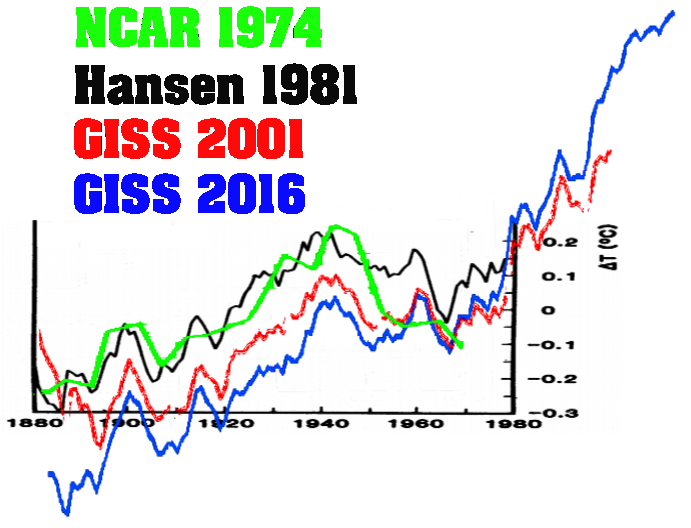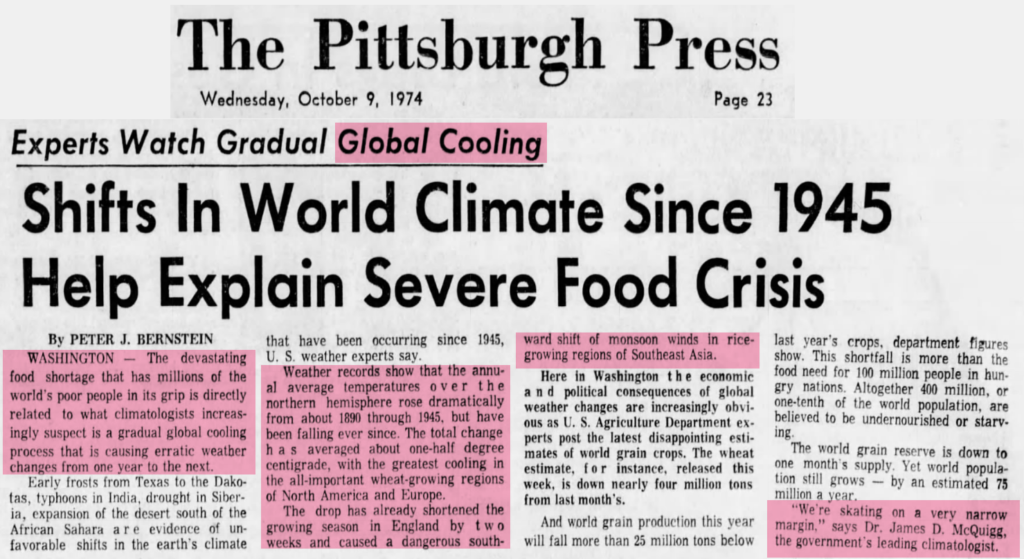Analysis: ‘The Link between Extreme Environmentalism and Hard-Core Racism’
By Jeffrey A. Tucker
Wednesday, July 06, 2016
In my reading and writing on the history of eugenics (here, here, and here), I’ve begun to discern a common trait between the people called environmentalists and racists from a century ago.
They share a common outlook that is illiberal to its core. They imagine that a wise and powerful state can better plan a future for both nature and man. Both groups were panicked about unplanned progress, assuming it could only resort in degeneration, mongrelization, and destruction. They dreamed of a future in which they and not the unwashed masses would be in charge of how resources are used and how the human race propagates itself.
Madison Grant Saves the Trees and the White Race
Thanks to Mother Jones, my suspicions have been confirmed. An essay that pleads with the progressive movement to deal forthrightly with its own grim history of racism discusses the life and work of Madison Grant (1865-1937). This bushy-lipped aristocrat was the hero of the environmentalists in the Progressive Era. He saved the redwoods of California from logging. He was the guru behind the creation of national parks. He undertook the most aggressive efforts ever to preserve species from extinction. He was handsome, urbane, ridiculously well educated and well connected, and “the greatest conservationist who ever lived.”
Also, Grant wrote the book that Adolf Hitler described as “my Bible.” The book is the 1916 The Passing of the Great Race. A bestseller for many years, on the coffee tables in all the fashionable houses, it is quite possibly the crudest, crankiest, and most bloodthirsty racialist tract ever written; and there’s a lot of competition for that title. He championed segregation, exclusion, sterilization, immigration restrictions, a welfare state (to keep women from working), a high bar for professional employment (minimum wages), and aggressive central planning.…
106-Year-Old Photo Makes Global Warming Alarmists Think Twice About Paris Floods
106-Year-Old Photo Makes Global Warming Alarmists Think Twice About Paris Floods
“More than 100 years ago, the Seine River rose a record breaking 8.6 m (roughly 20 feet) above usual levels, causing the catastrophe known as the 1910 Great Flood of Paris.” From the Daily Caller:
— gReader Pro…
Analysis of Greenland temperatures finds they ‘were just as high in 1930s & 40s as they have been in recent years’ – Recent Summer temps are lower
By Paul Homewood
https://notalotofpeopleknowthat.wordpress.com/2015/09/19/dmi-show-greenland-was-warmer-in-1930s/
According to the official numbers from DMI, annual temperatures across Greenland were just as high in the 1930s and 40s as they have been in recent years. The only exception was the unusually warm year of 2010.
But what about summertime temperatures? Since that is when most ice melt occurs, this time of year is perhaps the most relevant.
Based on the actual temperature record, (and not the adjusted version), we can see that the pattern is similar to the annual trend for both Nuuk and Angmagssilik, on the west and east coasts respectively.
Again, temperatures since 2000 for the main part are, if anything, lower then the 1930s and 40s.
http://data.giss.nasa.gov/gistemp/station_data_v2/
There is nothing here to suggest that the climate in Greenland in the last century is any more than a reflection of natural cycles such as the AMO.…
Flashback 1974: U.S. Government’s Top Climatologist Said ‘Global Cooling’ Threatened Us With ‘Severe Food Crisis’
In 1974, the government’s leading climatologist James McQuigg said that global cooling threatened to starve us to death.
9 Oct 1974, Page 25 – The Pittsburgh Press at Newspapers.com
NASA has erased this cooling, because it doesn’t fit the White House agenda.

1981: 1981_Hansen_etal_1.pdf 2001: Fig.A.ps Current: Fig.A.gif 1974: NCAR 1974…
Flashback: Trump: ‘The Nobel committee should take the Nobel Prize back from Al Gore’
…1959 Paper Shows Most Warming Before 1945 …Arctic Warmed 7.7°C, Sea Level Rose 8 mm/yr
1959 Paper Shows Most Warming Before 1945 …Arctic Warmed 7.7°C, Sea Level Rose 8 mm/yr
The following clearly shows a complete lack of correlation between CO2 and temperature. Most of the 20th century warming occurred before 1945, and clearly was linked to natural factors at time the planet was emerging from the Little Ice Age. ==================================== Explosive (Non-Anthropogenic) Warming in the Early 20th Century By Kenneth Richard As Figure 1 depicts, human CO2 emissions were essentially flat during first half of the 20th century. Yet, the world’s climate warmed dramatically throughout this period. For example notice how steep the rise in near-surface (0 – 20 m) ocean temperatures was between 1900 and 1945 according to Gouretski et al. (2012, “Consistent near-surface ocean warming since 1900 in two largely independent observing networks“). As the Gouretski et al. (2012) graph indicates, near-surface ocean temperatures rose by about 1.2°C between 1900 and 1945. But then, in the next 65 years, between 1945 and 2010, the near-surface ocean only warmed by about 0.3°C in total, which includes a 30-year cooling trend (1945 – 1975). If we compare the two trends, the early 20th century (1900 – 1945) near-surface ocean waters warmed at a rate of almost 0.27°C per decade, whereas the more recent period (1945 – 2010) only warmed at a rate of under 0.05°C per decade. Interestingly, it was the more recent 1945 – 2010 period that contained the rapid expansion of anthropogenic CO2 emissions, with rates rising from ~1 GtC/year (1900 -1945) to nearly 10 GtC/year by 2010. These warming (and cooling) trends in the near-surface ocean are the opposite of what would be expected if human CO2 emissions were the primary driver. Sea level rose 8 mm/year between 1930 – 1948 What follows are some of the details of this dramatic early 20th century warming as documented by Princeton geologist Dr. Erling Dorf, a veritable expert on the subject. Notice from the summaries provided below that sea levels were observed to be rising at a rate of about 8 mm/year between 1930 and 1948 (6 inches in 19 years), which is more than double today’s modeled satellite altimetry rate (3.2 mm/year). These early 20th century temperature and CO2 trends beg the question: What were the physical mechanisms that caused this dramatic global-scale warming, since anthropogenic CO2 emissions were both low (~1 GtC/year) and stable during this period? Summary of the …
Flashback 1925: ‘Arctic Climate Turning Warmer; Glaciers Melting’ – ‘Arctic climate has changed considerably in recent years’
…Flashback 2007: ClimateCam is watching you!
A huge electronic billboard in the city square telling residents exactly how much greenhouse gas they have produced in the past hour. Sounds a little futuristic? Not if you live in Newcastle.
ClimateCam, the world’s first greenhouse gas speedometer, displays electricity consumption information collected from the 15 substations that supply homes and businesses in the Newcastle local government area. The council now believes Newcastle has been established as an international testing ground for climate solutions.
“We realise that the climate change issue is just so big and we are so, in Australia, far behind the rest of the world that we need to move very, very quickly if we’re going to catch up and have access to the huge economic opportunity that we foresee is coming with the implementation of climate solutions,” city energy and resource manager of Newcastle City Council, Peter Dormand says.
Sydney Morning Herald, 24 Oct 2007…
Beware of rampaging mice! ‘Researchers have found that mice can detect higher CO2 levels’
…Flashback: Say What? Moose threatened by climate change and causing it!? [ Note: Sounds like the problem will resolve itself!]
Say What? Norway‘s Moose threatened by climate change and causing it!? [ Note: Sounds like the problem will resolve itself!]
See contradictory articles below: 1) Climate change threatens Norway‘s moose (May 15, 2008 –
Aften Posten) versus 2) Norway‘s burping moose blamed for climate change – ‘more destructive to environment than cars’ (August 21, 2007 – Der Spiegel)
1) Climate change threatens Norway‘s moose (May 15, 2008 – Aften Posten) Excerpt: Climate change threatens Norway‘s moose – Already chased by hunters and often run down by cars and trains, the popular Norwegian moose now faces another threat: Global warming. Greenery that’s too mature can upset moose calves’ digestive systems, and hurt their chances of surviving their first winter. Researchers claim the moose population is threatened by higher temperatures in the spring and early summer that can upset their food supplies. “We’re not in any doubt,” Bernt Erik Sæther of the Norwegian University of Science and Technology (NTNU) in Trondheim told newspaper Aftenposten. “The moose is extremely vulnerable to climate changes. An especially warm spring and early summer can have immediate consequences on the mooses’ reproductive abilities.” That’s because warmer temperatures will lead to earlier sprouting of the greenery on which moose calves feed. If it sprouts early, it may be too dry and fibrous by June, when the calves are born and start to feed. That in turn will cause problems for the calves’ digestive systems and leave them too thin to survive their first winter. “They body weight is like a barometer for climate change,” Sæther said. Researchers had thought Norwegian animals would generally be well-equipped to handle a warmer climate, and even benefit from less snow and ice. Instead, the opposite is true. “We were very surprised by the findings, and that a warmer climate prompts large swings in the moose population,” Sæther said. “But all our analyses point in the same direction.” The research on the moose population, which in general has increased in recent years, is part of the Norwegian Research Council’s NORKLIMA program. http://www.aftenposten.no/
2) Norway‘s burping moose blamed for climate change – ‘more destructive to environment than cars’ (August 21, 2007 – Der Spiegel)
Excerpt: Norway‘s Moose Population in Trouble for Belching. The poor old Scandinavian moose is now being blamed for climate change, with researchers in Norway claiming that a grown moose can …





